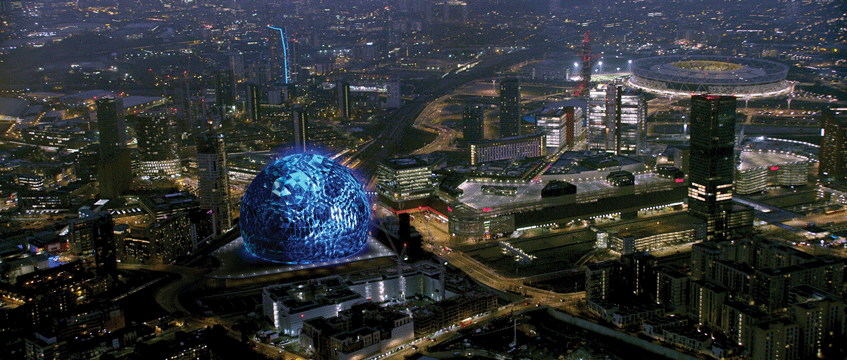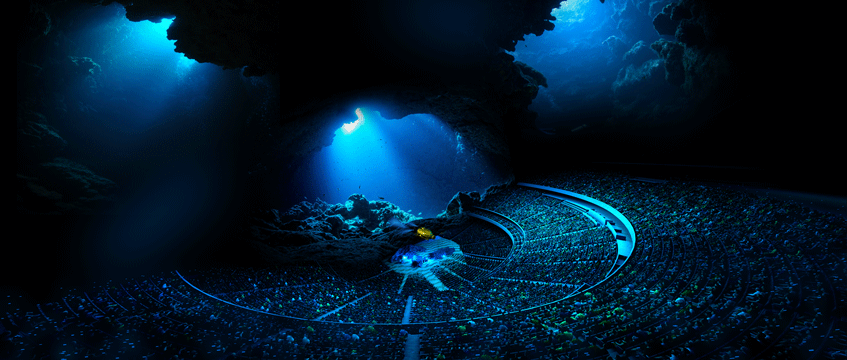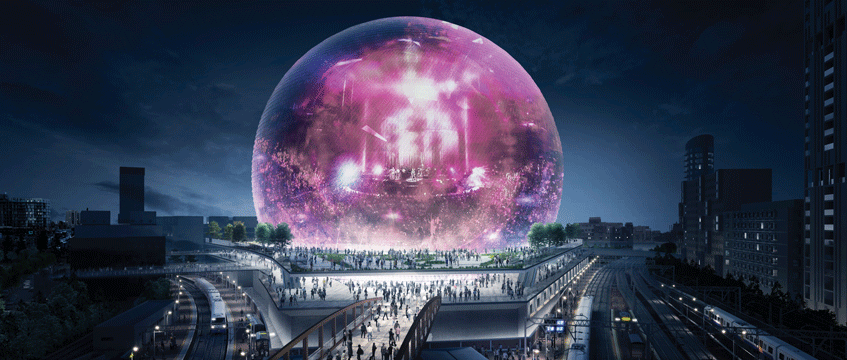The Madison Square Garden Company plans to disrupt the UK’s live entertainment scene with an 18,000-capacity spherical venue in London. Jayne McGivern, executive vice-president for development and construction, tells EG about it.
In a scenario that could be lifted straight out of a sci-fi film, within a few years London’s residents may wake up to find a futuristic sphere dwarfing the skyline at Stratford, E20.
The structure forms part of the Madison Square Garden Company’s plans to shake up the live entertainment industry and reinvent the modern-day arena.
“In the words of Captain Kirk, we are boldly going where no man has gone before,” quips McGivern.
MSG is consulting on proposals to build its first international venue, seating more than 18,000 people, on a 4.7 acre site next to the Olympic Park that it bought for £60m last year. It aims to submit its planning application around late October to early November.
The company plans to take on nearby rival the O2 with its design: a distinctive, round dome with the interior wrapped in programmable LED screens. The inside screen area, measuring four acres, is touted as the largest and highest-resolution screen in the world. There is a nearly identical venue being planned in Las Vegas.
McGivern, who at Anschutz Entertainment Group was the woman charged with transforming the Millennium Dome into the O2, describes the concept as an “entirely new platform for content that surrounds and envelops the audience”.
She says: “It will transport them to what is effectively a multi-sensory environment while they are enjoying what they have turned up to see – whether it is a rock concert, or an immersive show.”
The company, which owns the New York Knicks basketball team, has commissioned Wandsworth-based stadium architect Populous for the project.

Merging property with tech
Unlike its counterpart in Las Vegas – where its site is four times as large, at 18.9 acres – the building will sit on a podium. The site also straddles several railway lines. It will no doubt require a significant feat of engineering.
McGivern admits that, had the site been larger, her life would have been a lot easier. “That’s very London – the difficulties in delivery of the project once we start construction is something we are having to work on much earlier than in any other geography,” she says.
However, the benefits of the location – and its transports links – outweigh the disadvantages. “The most important thing is for the sphere to be accessible for our clients and customers, and for all of London to be able to get to it very easily and quickly,” McGivern says. “We have so many modes of transport all converging into the same spot, which overrode any potential technical difficulties.”
She argues that, in many ways, the sphere is more of a technology platform than a property project. As well as the interior LED screen, the company has developed an adaptive acoustic system, in collaboration with German audio-tech company Holoplot, to beam audio from a point individually to each seat so that the audience can hear the same sounds.
“Even in the best-designed building, the acoustics are slightly distorted because of the distance that the audio wave has to travel,” McGivern says. “But this system means there isn’t a better seat for acoustic performance. Whether you are right next to the point or 200ft away from it, you will hear exactly the same sound at exactly the same volume.”
The system can also beam different languages to individual sections of the arena simultaneously.
“You have both a visual and an acoustic impact that has never been done before,” says McGivern. “It is taking entertainment to the next level and the next generation.”
Because of this technology, the venue can host several types of entertainment. MSG is focusing in particular on demand for e‑gaming, which McGivern cites as a “big driver” for the type of technology it is developing.

London calling
For MSG, London was the obvious first choice to site its debut overseas venue. “Every act in the world wants to play London, and there was no other choice really,” says McGivern. “If you are expanding outside the US, London is definitely the first port of call.”
After conducting a market study, in which the capital was benchmarked against Berlin, Paris, Madrid and New York, MSG found that London had the highest ratio for average population size per venue, which stood at 4.4m. This was nearly 1m people per venue ahead of the next most densely serviced city, Berlin.
In addition, New York, the only city listed with a comparable population size, has seven venues – compared with two in London.
In London, Stratford offered the ideal location as the city’s emerging cultural district. “The transformation of Stratford, at Newham – and east London in general – is spectacular,” McGivern says.
“The mayor has very strongly put his weight behind it, and has very exciting plans for it – the V&A, Sadler’s Wells – and it already has the Olympic Park and Westfield Stratford. Our venue fits completely and compatibly with those aims.”
She also hopes The Sphere will connect the existing town centre with the up-and-coming cultural quarter. The proposals include three new pedestrian bridges linking the island site with Queen Elizabeth Olympic Park and Stratford.
“It is important we build something that the people in Newham – and everyone across London – can engage with and be really proud of,” McGivern says.
Research carried out by EY has found the site will generate an additional £50m revenue a year for Newham businesses. Excluding construction, it will also create 3,200 jobs in the UK.

Launchpad for businesses
In terms of the scheme’s broader economic potential, it will also bring new technology to London – which, McGivern says, could provide a launchpad for new businesses interested in supplying and servicing it.
“London will have something no one else has,” she adds. “It is already a world-class destination for live entertainment and this cements that reputation. And we are bringing in the jobs and investment that come with a [project] like this. That’s what we hope to achieve with the scheme.”
Although the London venue has yet to gain consent, MSG is already looking beyond the capital, indeed the UK, for expansion.
“We are looking seriously at the sites [for] the next generation of Sphere, after London,” says McGivern.
“There are several we are looking at: the US is an enormous geography and it makes sense for us to do more there. We are also looking in the Far East, the Middle East and Australia.”
Developing content that can be transferable between venues widens the scope for a series of MSG Spheres in key countries.
McGivern suggests that, instead of having to turn up “with 30 trucks” and producing a show over a few days, artists will perhaps have the option of “turning up with a dongle and plugging it into the building”, which in turn offers environmental benefits.
Planning mode
As disruptive as the scheme promises to be, MSG first needs to secure approval for its ambitious project. McGivern says it is “really going full tilt” to prepare its planning application so that it is ready to be submitted in mid-autumn.
The application will be sent to planning authority the London Legacy Development Corporation, and information will also be passed to the London Borough of Newham and the Greater London Authority.
MSG is also beginning initial interviews with contractors so that they can be involved in the latter stages of the detailed design process early on. It is aiming to start construction in summer 2019.
However, the project has attracted its critics. Rival AEG, which owns the O2, has outlined concerns over the venue’s east London location because it could increase congestion, given how close it is to the O2 arena as well as the London Stadium and the Copper Box Arena.
But with the plans already welcomed by both the mayor of London, Sadiq Khan, and Matt Hancock – the secretary of state for digital, culture, media and sport – it seems that MSG is not too far from setting the ball rolling.
To send feedback, e-mail pui-guan.man@egi.co.uk or tweet @PuiGuanM or @estatesgazette











